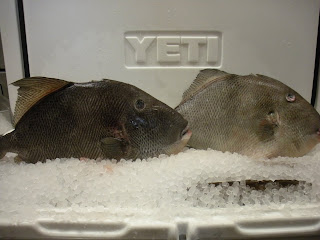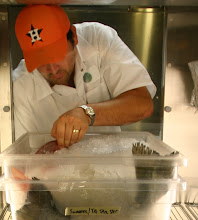The world of an independent restaurant owner is one of many dangers and great peril. Kind of like the 1980’s video game Pitfall: there are snakes, gators, trap doors, rolling logs and quicksand around every corner and it quickly becomes a game of timing and remembering key movements from your last trip down that corridor.

Birdie-Bea Caswell (my grandmother) used to say, “It takes all kinds,” and that certainly explains the colorful cross-section of individuals who make up a restaurant crew. My crew is no different (myself included). With the hours we work and the stress from the level of importance and detail we place on every diner or service, we all end up needing to blow off a little steam, or we forget to pay a ticket or we have a slight misunderstanding with a colleague (myself included). Please don’t misunderstand, I am in no way condoning such behavior, I’m just saying that it happens -- not often but, when it does, you’re going to need a quick hand, prompt action and - most of all - Mise en Place.
Call it an employee benefit, if you like. I’ve always welcomed the responsibility of bailing my crew out when they end up on the wrong side of the law. You might feel that it’s actually irresponsible of me, that I am condoning bad behavior, but the priests at my high school (St. Thomas) used to provide the same courtesy. With the recent James Beard nomination of Phillip Speer -- my first bailee – it just goes to show that second chances are all they are cracked up to be.
Let me lay it out for you (because, more often than not, this is how it goes down): You get a call at 5:30am Friday morning (this kind of shit never happens on Monday!) that your #1 Grill Guy (aka Potsie) is in the slamma. You can count on two things in this situation: one, Potsie will do just about anything to be freed from the chains that bind; and two, who the hell is gonna run the grill tomorrow night? Immediately, the thought of doing those 350-400 covers without Potsie causes a burning sensation in your gut, and the words “Lord, I’m gonna be sick!” cross your lips. Quick as the word bubba, we can make this happen.

Here is exactly what you need to do when you hear that dreaded recorded phrase (“This is a collect call from the City of Houston Jail”) pulling you out of a deep sleep:
#1 – Set up your cell phone to receive collect calls.
I don’t know anyone who still uses their home phone anymore. And cell phones don’t accept collect calls unless you set them up to do so. Call your cellular provider and set up an inexpensive pre-paid option.
#2 – Keep an employee list handy
In the middle of the night, you’re not going to remember how Potsie spells his last name, much less his DOB. Keep an updated employee list handy (with the correct spelling of everyone’s name) and make sure you have their birth dates (the most important information for the bail bondsman).
#3 - When that dreaded call comes, move very quickly.
The goal is to get them out ASAP, despite the inherent, mind-boggling slowness of the entire process. The slamma is one big-ass line – there’s a line for everything, a line to get in, a line to get out. The sooner you get the bond paid, the sooner they get in the line to get out. Even worse is the line to County (so count your blessings if your guy is still in the City jail). Usually within 24 hours, depending on the charge, your friend is gonna get transferred to County, which means flip-flops, orange jumpsuits and the worst kind of company. So act fast.
#4 – Ask Potsie the right questions.
The information the bail bondsman needs to know is:
What precinct are they in and what department?
Remember, Houston has many small municipalities and villages -- West U, Belliare, the Memorial villages. If the arrest was made by HPD, it’s usually Houston St. for boys or Mykawa for the ladies.
What was the charge?
This is pretty important when it comes time to take a collection for the bond.
For most, the first time you get arrested is about the worst experience ever. A little assurance that you’re gonna bust them out goes a long way.
#5 – Immediately call your Bail Bondsman.
Oh you don’t have one? Well, most don’t and that is the core of this lesson. With one trip and a little paperwork, you can make this entire process simple and bail that loved one out with just a 30 minute visit to the Bail bondsman.
I’ve used A Way Out for about six years and they have done me right, but if you have a lawyer friend just ask them who they recommend. While you’re there filling out your paperwork, plug in the Bail Bondsman’s number in your phone and get a contact name, makes it easier when you’re making that bleary-eyed 5:30 am call. At A-Way-Out, it’s Lalo in the AM and Angela in the PM.

Now all you have to worry about is Potsie’s ride home. Usually, that’s the job of the sauté guy who was out with him the night before.

























































